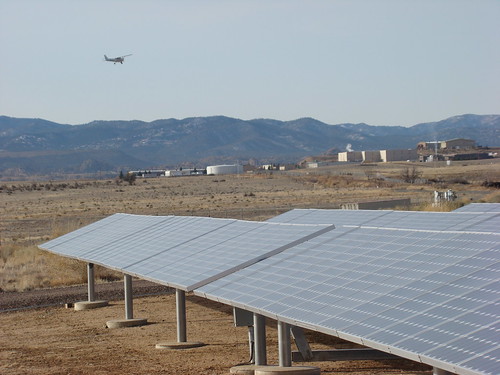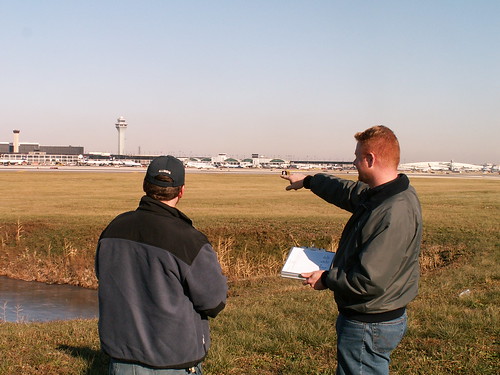
Most people are familiar with the weekly summer ritual of mowing the lawn. At best, the smell of fresh cut grass is appealing, but often the task is considered time consuming, tiring and expensive. What if your “lawn” was actually hundreds of acres in size, and how often you mowed it, what type of grass you had, and if you used pesticides greatly impacted the safety of nearby residents? “Mowing the lawn” is just one of the tasks airport managers and biologists confront as they work to keep wildlife away from runways and aircraft.
Currently, productive land use near airports is limited and keeping the land fallow is usually the norm. What airport managers see as a cost of doing business, USDA researcher Dr. Travis DeVault sees as an opportunity.
Since 2009, DeVault and colleagues at the National Wildlife Research Center’s Sandusky, Ohio, field station, a part of the USDA Animal and Plant Health Inspection Service, have partnered with Mississippi State University researchers to explore alternative uses for lands on and near airports with the goal of reducing wildlife hazards, while also providing a source of revenue for airports.
In a recent study, DeVault and colleagues estimated that airport properties in the contiguous United States contain approximately 1,276 square miles of idle grasslands─an area larger than the state of Rhode Island. In DeVault’s eyes, much of this land could potentially be converted to biofuel, solar or wind production.

“Though there’s a big push to increase renewable energy production in our country, land managers are cautious about the impacts that wind, solar and biofuel production may have on wildlife and conservation efforts,” notes DeVault. “Why not locate alternative energy production on and near airports where wildlife presence is already discouraged?”
Current research efforts are investigating wildlife use of solar arrays and biofuel crops, such as switchgrass and mixed warm-season grasses.
“Our goal is to identify biofuel crops or other renewable energy sources that are undesirable habitats for wildlife hazardous to aviation. Finding such land uses will not only help reduce wildlife collisions at airports but also promote renewable energy production in areas inappropriate for wildlife conservation.”
For more information, please visit NWRC’s reducing wildlife hazards to aircraft project page.
